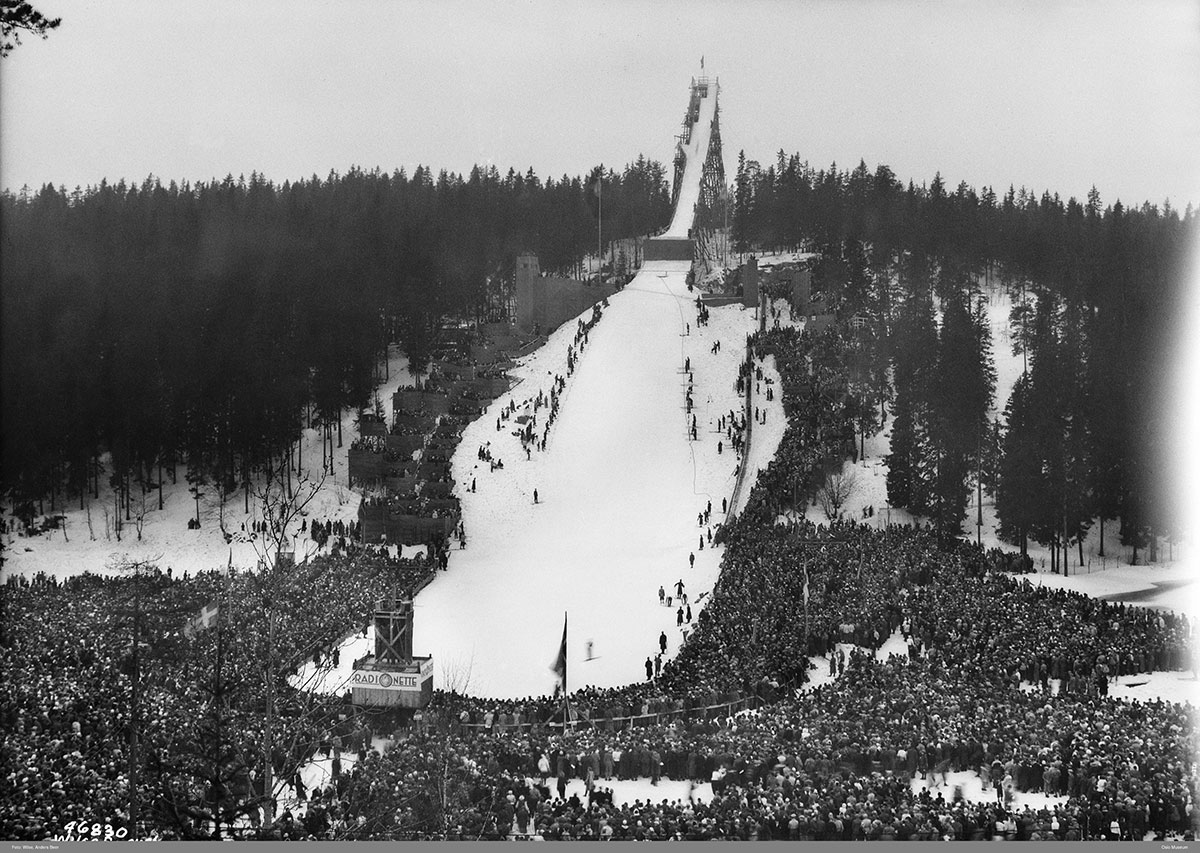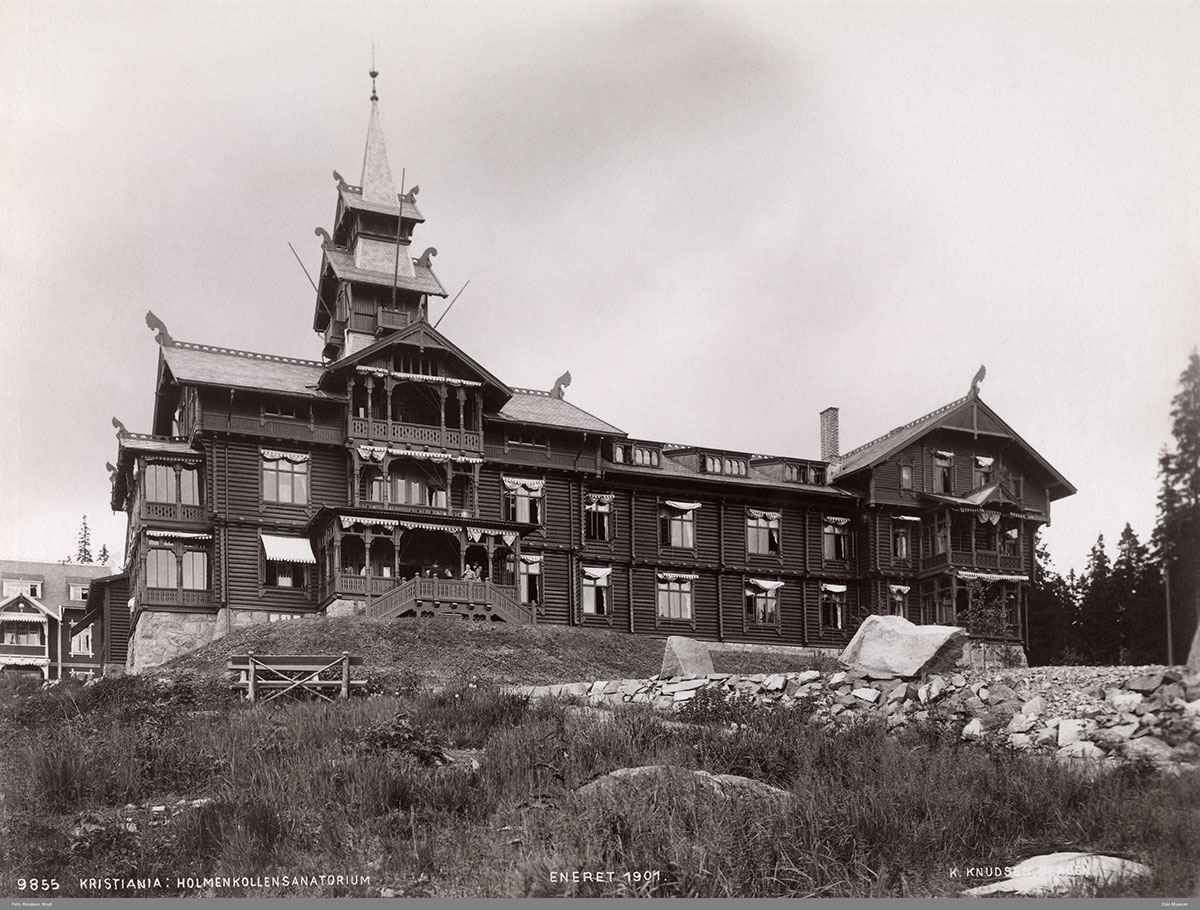The area was connected to the city center through the Holmenkoll Line. The line had a terminus at Besserud in 1898 and was extended to Holmenkollen in 1915.
The Holmenkollen ski jump
The Holmenkollen ski jump, Holmenkollbakken, opened in 1892. The hill is Norway's most visited tourist attraction and is also one of the world's oldest ski slopes that is still in use. In addition to the ski jump, there is a cross-country and biathlon stadium. The ski museum is also located here, as part of the Holmenkollen facility.

Other landmarks
After the opening of the ski jump, several hotels and sanatoriums were built in the area. Holmenkollen Sanatorium opened in 1891 and took the name tourist hotel after the original tourist hotel burned down for the second time in 1914. Today the hotel is called Scandic Holmenkollen Park Hotell.
From the ski resort you can also catch a glimpse of the Holmenkollen chapel. The chapel was designed by Holger Sinding-Larsen, who won an architectural competition in 1894. It was put into use as a house of worship in 1903 and inaugurated as a chapel in 1913.The chapel was built in the national style with timber of huge dimensions.
In August 1992, the chapel was completely damaged in an arson attack, but a new chapel according to the original drawings was erected shortly afterwards. The chapel, consecrated in 1996 with only minor changes from the original, still stands today.

The Post-World War II era
The area around Holmenkollbakken was used as a military area by the Germans during the Second World War. Here they built a camp with a mountain facility, which was later used by the Norwegian Armed Forces before the facility was bought by Oslo municipality in 2007.
The residential area in Holmenkollen was significantly developed after the war, with low-rise apartment buildings, townhouses, and terrace houses. Holmenkollen is considered an exclusive residential area, and the development caused conflicts with the original villas. Today, Holmenkollen belongs to Vester Aker district. As of 2024, Holmenkollen has approximately 9,200 inhabitants.
External films
Watch the film "Majorstuen stasjon, Holmenkolldagen 1924" on youtube.com
Watch the film "Skikonkurransenes hovedstad, 1958" on youtube.com
Watch the film "Holmenkollen – skisportens mekka, 1982" on youtube.com
Watch the film "Akekonkurranse i Korketrekkeren" on youtube.com